Every league in the world has its derby matches, those entrenched local, political or social rivalries which give added fervour to the average game. Some of these derbies, however, spill over into frequent violence, hatred and all-out warfare between the fans of the respective clubs.
In this article I list ten of the most vociferous and aggressive derbies in world football and look into the violence which has made them so notorious the world over.
AC Milan v Internazionale
“Derby della Madonnina”
One of Italy’s fiercest rivalries, the Milan derby or the Derby della Madonnina pits AC Milan against bitter rivals Internazionale within the grandiose confines of the magnificent San Siro. With a rivalry stretching back to the split of the original Milanese football club into two separate entities over a dispute about the employment of foreign players in 1908, the competition between the two clubs has become ingrained in the social fabric of the city and legendary both within Italy and across the globe.
Such is the strength of the partisan devotion the ultras of both clubs have for their teams, violence has constantly blighted the fixture throughout its long and tumultuous history. In recent seasons the intensity of crowd disruption has been high, with frequent clashes between fans – both in and out of the stadium – and incidents involving players such as AC Milan goalkeeper Dida being struck by a flare in the 2005 Champions League quarter-final, becoming a worryingly regular occurrence.
However, the crowd violence should not be allowed to detract from what is a consistently magnificent spectacle and one of football’s most glamorous and high-calibre encounters. The likes of Pirlo, Pato, Zanetti and Eto’o continue to ensure that the Milan derby is amongst the best expositions of football and one of the game’s most impassioned and significant rivalries.
Ajax v Feyenoord
“De Klassieker”

The most serious incident between the two sets of supporters came in 1997 when an Ajax fan was beaten to death during a clash between the two firms in the outskirts of Amsterdam. The tragic event led to away fans being barred from the next two fixtures between the two sides and a much increased police presence. Violence again marred the Klassieker in 2005, riots taking place outside Feyenoord’s De Kuip stadium after a group of Ajax fans had heavily vandalised the train taking them to the ground and being forced to wait outside the stadium for the entirety of the match as a result.
Last season both clubs reached an agreement with the Dutch Football Association to ban away supporters from the fixture for the foreseeable future. The legislation may make the atmosphere in the two clubs’ respective grounds more peaceful, but you can guarantee that this rivalry won’t lose any of its spice as a result.
Barcelona v Real Madrid
“El Clasico”

Thankfully fan violence in Spain is relatively rare in comparison with other European countries, but El Clasico has provoked violent incidents in the past. Vandalism to team buses and the interruption of training sessions by opposition fans have been regular features of this fixture down the years and have shaped the nature of this most hostile of rivalries.
The derby has also been littered with a plethora of footballing and political protests throughout its history. One of the most high-profile and heated examples of this was in 2002 when Luis Figo received an intensely hostile reception in the Camp Nou when he returned to face his former employers as a Real Madrid player. A host of missiles were directed at the Portuguese from the Barcelona ultras, the most unpleasant of which being a pig’s head, an incident which resulted in a review of fan behaviour in Spain.
El Clasico continues to be one of football’s most eagerly anticipated fixtures and a game of continuing political and sociological relevance in Spain. Doubtless these two sides will continue to inspire the global football community every time they meet for generations to come.
Cracovia v Wisla Krakow
“The Holy War”
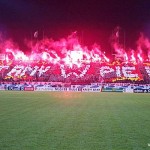
Tragically “The Holy War” has claimed a number of lives of the years. In a city defined by such a strong rivalry simply saying or wearing the wrong thing in the wrong part of town can lead to deadly consequences. Indeed, between 2004 and 2006 eight fans lost their lives as a direct result of football violence in what has become known amongst football firms as “The City of Knives”.
One of the most notorious episodes in the history of the Krakow derby came in 1990 when, during clashes with Cracovia fans, the Polish police responded with unduly harsh and brutal treatment of the scrapping supporters. The Cracovia fans reacted by counter-attacking the police and were joined in their struggle by Wisla fans who also rounded on the police, action which resulted in an all-out battle between both sets of fans and the authorities. A group of fans then marched into the centre of Krakow, ransacking the Soviet embassy where a number of police officers had taken refuge. This incident further gave rise to the fearsome reputation of the derby and established its notoriety around Europe.
Fenerbahce v Galatasaray
“The Istanbul Derby”
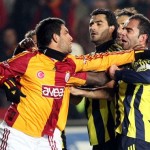
Like the Krakow derby, confrontations between “Fener” and “Gala” have also claimed lives amongst the countless acts of violence and rioting that are constant scourge to this most restless of encounters. Indeed, such are the extent of the social and political cleavages that surround this fixture and its history, the Istanbul derby will continue to divide Turkey’s largest city along class lines for generations to come.
Flamengo v Fluminense
“Fla-Flu”

With the “Fla-Flu” fixtures being played out in the magnificent Maracana stadium, the derby is given an added intensity and makes for a volatile and intimidating atmosphere when the 90,00 capacity arena is sold out. Violent clashes between fans of the respective teams are a frequent occurrence and derby games in recent seasons have been disrupted by pitch invasions and chaos in the stands. These are two of Brazil’s most popular clubs and the passions of their respective fan bases are clear for everyone to see.
Rangers v Celtic
“The Old Firm”

Clashes between Scotland’s two most successful clubs have a history of violence which has made the fixture notorious the world over. Heavily invested with Northern Irish politics, partisan chanting and confrontations between the loyalist supporters of Rangers and the republicans of Celtic are a regular feature of this particular rivalry. Indeed, such is the extent of the sectarian nature of the Old Firm derby Rangers, up until relatively recently, has been accused of deliberately not employing any player who was openly Catholic.
Although serious incidents of violence have reduced in recent years, the Old Firm derby remains one of the most volatile and politically sensitive in world football with such strong ideological differences dividing two sets of such passionate fans. With the strength of feeling in Glasgow so deeply at Ibrox and Parkhead, the Old Firm rivalry doesn’t look like losing any of its intensity any time soon.
River Plate v Boca Juniors
“Superclasico”
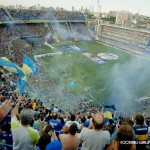
Like so many of the derbies on this list, the Superclasico has endured its share of tragedy over the years. The worst incident in the fixture’s history came in the summer of 1968 when 71 fans were killed and 150 injured in a crushing stampede in the away end of River’s El Monumental stadium. Although no-one was ever found guilty for the incident, some reports from the time claim that Boca fans had dropped burning River Plate flags from the upper-tiers of the stadium which had landed amongst their own supporters and caused the crush. Others have laid the blame at the door of the police, saying that the authorities had kept pushing Boca fans back into the enclosure despite overcrowding and a lack of available exits from the stand. Whatever the cause for the “Puerta 12” tragedy, the incident has scarred the Superclasico ever since and has given it an added significance.
The Superclasico continues to be Argentina’s most intense derby and an event which ruptures the great city of Buenos Aires along its social and political fault lines every time it is played. To get a feel for the strength of passion Argentines have for the game, you need only watch these two clubs go head to head to realise just what it means to the people of Buenos Aires and the country as a whole.
Roma v Lazio
“Derby della Capitale”
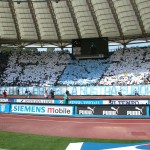
Divided along political and social lines with Lazio being the club of the wealthy elites and Roma representing the Roman working classes, the Derby della Capitale is notorious for being Italy’s most violent and volatile fixture. With the notoriously fascist ultras of Lazio occupying the Curva Nord and Roma’s equally right-wing hardcore support crammed into the Curva Sud, the Stadio Olimpico always generates an incredibly hostile atmosphere on derby day.
Thirty years ago Italian football’s first ever fatality came about as a result of the Rome derby, a fan being struck in the eye by a flare and dying as a result of his injuries, an incident which has set the tone for one of the world’s most vociferous derbies ever since. Indeed, during the 2004/05 season Roma’s ultras forced the game to be abandoned half way through after a rumour spread that the police had run over and killed a child in the lead-up to kick off. The game descended into a battle between the two sets of supporters and it has been said that over 170 police officers were badly injured at the scene with 13 arrests eventually being made when the ugly scenes had subsided. This is a fixture which truly warrants its place on any list of the world’s most violent rivalries.
West Ham United v Millwall
“East London Derby”
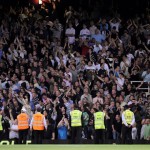
When the two sides faced each other in the third round of this season’s Carling Cup in August there was widespread violence and crowd disruption as the bad feeling between the two clubs was vented at Upton Park. In the hours before the game there were planned fights between supporters as missiles were thrown and one man was stabbed and taken to hospital in a critical condition. Inside the ground pitch invasions disrupted the match on a number of occasions before fans overran the playing surface after the final whistle as police struggled to contain the disruption.
The violence in August evoked memories of the “bad old days” of British hooliganism, particularly previous clashes between West Ham and Millwall such as in 1976 when Ian Pratt, a Millwall fan, was killed following clashes with Hammers supporters. Violence on such a large and shocking scale was something that the British football authorities had hoped had been eradicated in the country, but the rivalry between West Ham and Millwall unfortunately shows that the game is not yet free of the yoke of brutality yet.
Also See: Our extensive coverage of the biggest football rivalries from around the world, as well as our coverage of football violence and the worst riots in football.
Add Sportslens to your Google News Feed!